Kids learn best when they are able to connect ideas and concepts through hands-on learning and it’s even better if they can do it while having fun! We’ve compiled a list of fun science experiments and science projects that are perfect for your next 5th grade science fair or anytime.
Many of these 5th grade science fair projects are easy to set up, quick to perform, and use inexpensive, readily available materials found almost anywhere. Plus, we include helpful preparation questions and a clear, easy to understand explanation of “why it works” with every tutorial.
Science Fair Project Difficulty Level and Required Materials – Our list includes the following ratings to help you quickly and easily find the best science fair experiment or science lab activity for you.
Experiment Difficulty:
- Simple: Quick to perform experiments that can be done anytime without much advance planning
- Moderate: Experiments that take longer to perform or take more time to prepare for or set up
- Challenging: Higher commitment experiments requiring more preparation, longer performance time, and more effort
Materials Required:
- Simple: Requiring only a few basic items from the supply closet or items found in most homes
- Moderate: Inexpensive, readily available materials found almost anywhere for easy purchase
- Challenging: Needs special items that might require items to be ordered in advance or that are more expensive
Investigate Density with Floating and Sinking Soda Pop Cans
Collect your materials and investigate density in action. Be sure all your soda cans are the same shape, size and volume, and that you have a variety of different types of pop, both regular and diet. The activity takes only about 5 minutes to perform after set up and is a simple, yet effective density experiment with exciting results.
Questions: Do you think all the cans will sink or float when placed in water? Do you think they will all behave the same way?
Experiment Difficulty: Moderate
Materials Required: Moderate
Experiment Details & Lab Kit: Floating and Sinking Soda Pop Cans
Explore Pitch By Making a Wine Glass Sing
With only two supplies needed (a wine glass and water), this experiment is super easy and fun to perform. Kids can explore and test how the pitch and volume of sound changes by changing a few variables.
Questions: What do you think makes the wine glass sing?
Experiment Difficulty: Simple
Materials Required: Simple
Experiment Details: How to Make a Wine Glass Sing
Test the Earth’s Magnetic Field with a Needle Compass
This is a super simple experiment, is quick to perform, and only requires a few materials. Make your own compass then test magnetism, magnetic poles, and the Earth’s magnetic field.
Questions: What makes the needle function like a compass?
Experiment Difficulty: Simple
Materials Required: Simple
Experiment Details: Floating Needle Compass
Investigate Atmospheric Change as you Make a Cloud Form in a Jar
Explore the physical changes and reactions that happen as clouds form within the atmosphere with this easy to perform experiment. Watch in amazement as you watch a cloud begin to take form inside a glass jar. Includes a chart to explore the different types of clouds and where they form in the sky.
Questions: How do clouds form in the atmosphere?
Experiment Difficulty: Simple
Materials Required: Simple
Experiment Details: Make a Cloud Form in a Jar
Discover Buoyancy and Test Density as the Orange Floats
Experimenting with objects to determine what will float and what will sink allows students to explore and test density while learning more about buoyancy. It’s a quick experiment that will only take a few minutes to perform with only a few needed materials.
Questions: Why does the heavier orange float?
Experiment Difficulty: Simple
Materials Required: Simple
Experiment Details: Orange Float
Musical Jars Investigate Sound Waves and Pitch
Investigate and explore pitch, sound waves, and more as you make your own simple musical instrument. Easy to set up and easy to perform with glass jars, water, and a metal spoon. Food coloring is optional.
Questions: Why do the jars make different sounds?
Experiment Difficulty: Simple
Materials Required: Moderate
Experiment Details: Musical Jars
Make Hair Stand on End with Static Electricity
Students explore static electricity while having a great time with the science behind this experiment. Learn how to change an object’s charge and see the results in action with only a few items and an assistant with long hair.
Questions: How does static electricity make hair stand on end?
Experiment Difficulty: Simple
Materials Required: Simple
Experiment Details: Hair Stand on End
Explore How Liquid Viscosity Impacts Magnetic Attraction
Students learn about magnetic attraction, resistance, and viscosity through this simple experiment. Use a variety of different liquids to test the concept and your theory.
Questions: Does the type of liquid in a glass impact a magnet’s attraction?
Experiment Difficulty: Simple
Materials Required: Moderate
Experiment Details: How Liquid Viscosity Impacts Magnetic Attraction
Colorful Exploration of Capillary Action
Students can observe the water walking AND changing color with only a few supplies you probably already have in your kitchen. The water in this simple experiment appears to defy gravity and change colors like magic while you learn about capillary action, attraction, and cohesive forces.
Questions: Is it possible for the water to move into the empty glass? What happens to the color of the water?
Experiment Difficulty: Simple
Materials Required: Simple
Experiment Details: Color Changing Walking Water
“See Sound” When You Investigate Sound Waves
Using just a few common household materials, you can explore sound and answer the question, “Is it possible to see sound?” Students investigate the properties of sound waves and demonstrate how to see them in action with this easy, yet impressive experiment.
Questions: Is it possible to see sound?
Experiment Difficulty: Simple
Materials Required: Simple
Experiment Details: How to See Sound
Explore Convection Currents in Action
With a few drops of food coloring, cooking oil, and a candle you can explore and observe convection currents in action. In this simple yet exciting science experiment, kids explore the concepts of convection and density as they watch convection currents in motion. Adult supervision is advised since this experiment requires fire.
Questions: Can heat cause movement?
Experiment Difficulty: Moderate
Materials Required: Moderate
Experiment Details: Convection – How Heat Moves
Investigate Air Pressure with Ping Pong Balls
This simple, yet fascinating experiment leaves students amazed with the results. Test Bernoulli’s principle, air pressure and more when learning how it works.
Questions: Does air pressure affect stationary objects?
Experiment Difficulty: Moderate
Materials Required: Moderate
Experiment Details: Air Pressure Impact on Ping Pong Balls
Create Your Own Balloon Rocket
This simple and fun science experiment demonstrates Newton’s Third Law of Motion while exploring Action and Reaction. Using simple materials, students learn how air movement can propel balloon like a rocket!
Questions: Does air pressure affect stationary objects?
Experiment Difficulty: Moderate
Materials Required: Simple
Experiment Details: Balloon Rocket
Blow Up a Balloon with a Simple Chemical Reaction
Using everyday items, this impressive science experiment demonstrates how to blow up a balloon while exploring a simple chemical reaction between baking soda and vinegar.
Questions: Is it possible to blow up a balloon without using your mouth?
Experiment Difficulty: Simple
Materials Required: Simple
Experiment Details: Balloon Blow Up
Test Polymers with Water That Doesn’t Leak
This quick and easy science experiment tests the properties of polymers in a fun and exciting way. Using only three materials found in almost every home, students can see if they can poke holes through a full bag of water without any water leaking out.
Questions: Is it possible to poke holes in a bag of water without it leaking?
Experiment Difficulty: Simple
Materials Required: Simple
Experiment Details: Water Doesn’t Leak
Explore Density with Oil Bubbles
Although oil and water don’t mix, students can learn about density and a little bit of chemistry as they watch oil bubbles form with just a few common kitchen items.
Questions: What happens when you add salt to oil and water?
Experiment Difficulty: Simple
Materials Required: Simple
Experiment Details: Oil Bubbles in Water
Test Air Pressure with An Upside Down Glass of Water
It only requires a glass, a thick piece of paper or cardstock, and water to test the strength of air pressure! But, how does air pressure make it possible to turn a full glass of water upside down without it spilling? Find out how with this impressive experiment.
Questions: What happens if you turn a full glass of water upside down?
Experiment Difficulty: Simple
Materials Required: Simple
Experiment Details: Upside Down Glass of Water
Explore Density with Your Own Cartesian Bottle Diver
Test and demonstrate the properties of density and how it impacts an object’s ability to sink or float when you create a bottle diver out of everyday materials found at home.
Questions: Is it possible to make an object sink and float in water?
Experiment Difficulty: Moderate
Materials Required: Simple
Experiment Details: Bottle Diver
Test and See Viscosity in Action
Define and investigate, and test viscosity while you predict how an object reacts in liquids with different properties.
Questions: How does the consistency of a liquid impact how long it will take a marble to sink in a jar of liquid?
Experiment Difficulty: Simple
Materials Required: Simple
Experiment Details: Viscosity of Liquids
Investigate Bernoulli’s Principle with Floating Ping Pong Balls
Enjoy learning about gravity, force, and air pressure while making ping pong balls float. This experiment allows students to test and make observations as you test and consider Bernoulli’s Principle with ping pong balls and other objects. Note: The air from the hairdryer in this experiment can get hot, so please use caution as needed.
Questions: What makes it possible for the ping pong ball to float in the air?
Experiment Difficulty: Simple
Materials Required: Simple
Experiment Details: Floating Ping Pong Balls
Test and Observe Refraction As a Ruler Changes Sizes
This simple experiment is fun and exciting to demonstrate. Students explore how light travels through different mediums as well as how and why it bends and reacts in different liquids.
Questions: Why does the ruler appear to change sizes when placed in different liquids?
Experiment Difficulty: Simple
Materials Required: Moderate
Experiment Details: Ruler Changes Sizes
Explore Hydrothermal Vents and Density with an Underwater Volcano
This is a fun volcano experiment with an underwater twist. Students create an impressive visual demonstration while testing the scientific fact that hot water rises and cold water sinks. It is a simple way to explore the concept of hydrothermal vents.
Questions: What makes the bottle react like an underwater volcano?
Experiment Difficulty: Moderate
Materials Required: Simple
Experiment Details: Underwater Volcano
Keep a Paper Towel Dry Underwater and Demonstrate the Volume of Air
It might not seem possible to keep a paper towel dry underwater, but science proves that it is! This simple experiment helps students explore the volume of air and density with an impressive visual.
Questions: Is it possible to submerge a paper towel in water without it getting wet?
Experiment Difficulty: Simple
Materials Required: Simple
Experiment Details: Dry Paper Towel
Test Temporary Magnets with a Paperclip Chain
This quick and easy science experiment only takes minutes to set up and perform, but the result seems magical. Using simple science, students explore magnet transference as they demonstrate the power of temporary magnets with an impressive paperclip chain.
Questions: What makes it possible to create a paperclip chain simply by touching them together end on end?
Experiment Difficulty: Simple
Materials Required: Moderate
Experiment Details: Paperclip Chain
Investigate Freezing Temperatures When You Pick Up Ice with a String
Demonstrate the power of freezing points with this quick and easy 3-minute science experiment. Students test freshwater versus saltwater as they experiment with freezing temperatures.
Questions: What makes it possible to pick up ice with only a string?
Experiment Difficulty: Simple
Materials Required: Moderate
Experiment Details: Pick Up Ice with a String
Make an Arrow Changes Direction with Light Refraction
Using only paper and a glass of water, science can explain how an arrow can change directions right before your eyes! This visually impressive experiment is so quick and easy to perform while students demonstrate the properties of light refraction.
Questions: Is it possible to use water and light to change the direction of an arrow?
Experiment Difficulty: Simple
Materials Required: Simple
Experiment Details: Light Refraction
You may also be interested in:
- Easy Science Experiments – 35 cool experiments you can easily do today
- Science Lab Kits – Over 50 easy to do science labs
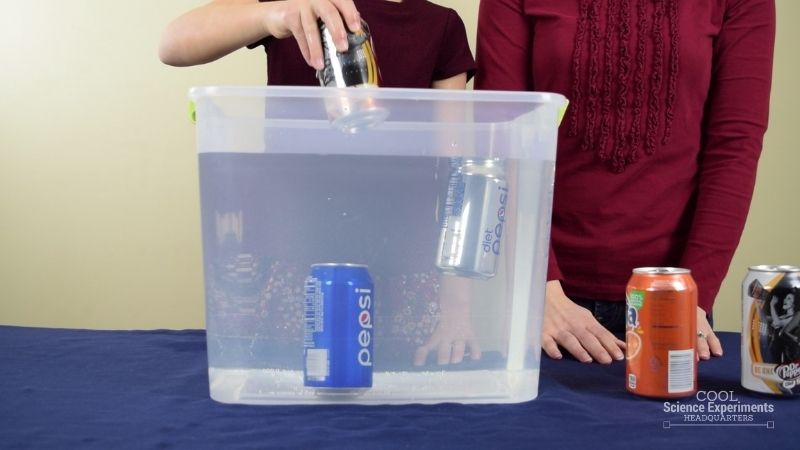
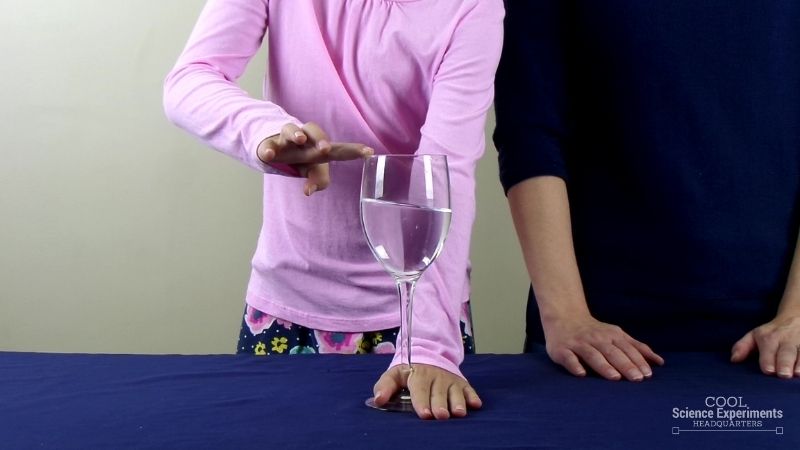
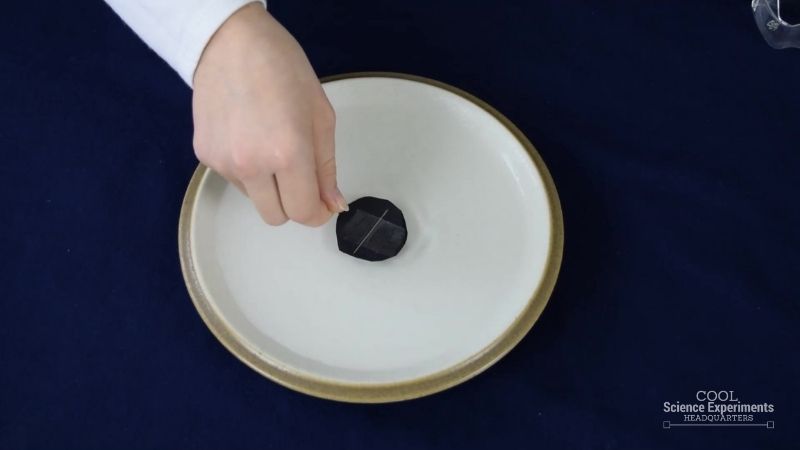
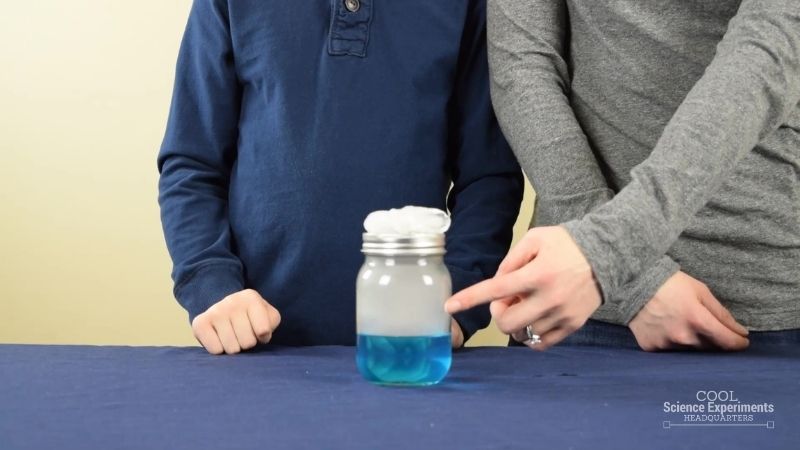
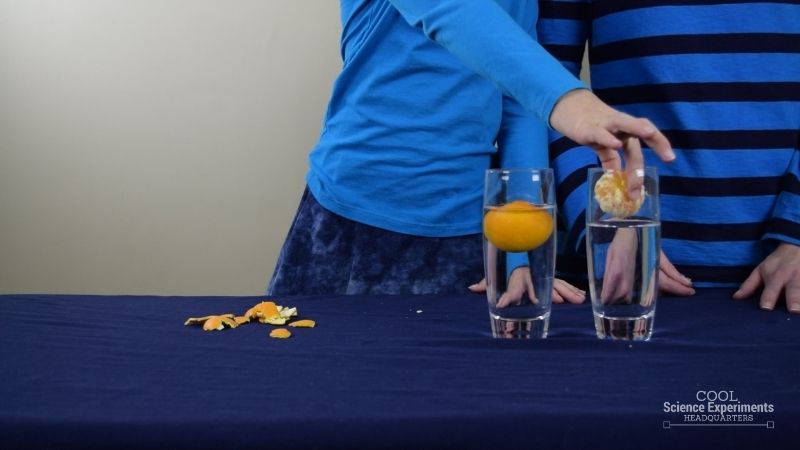
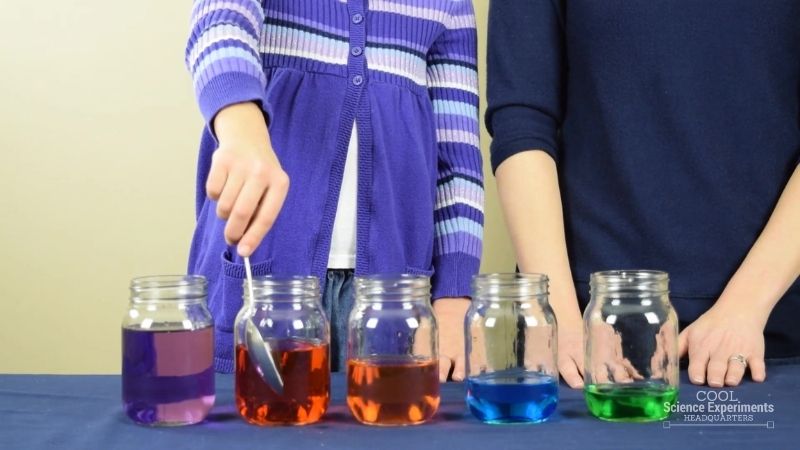
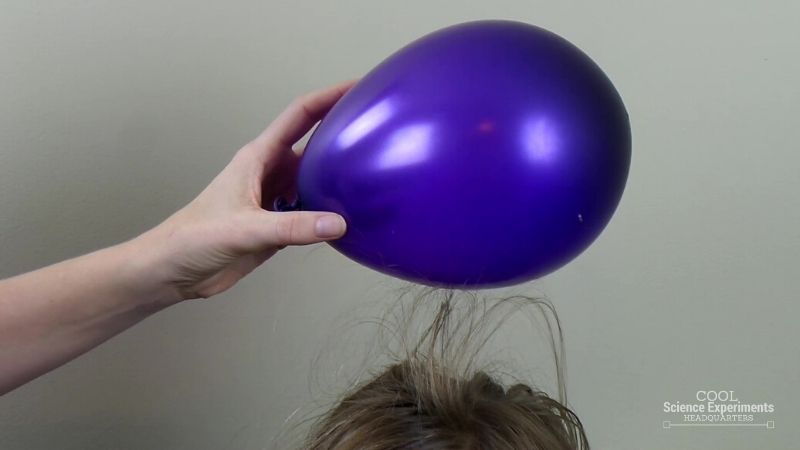
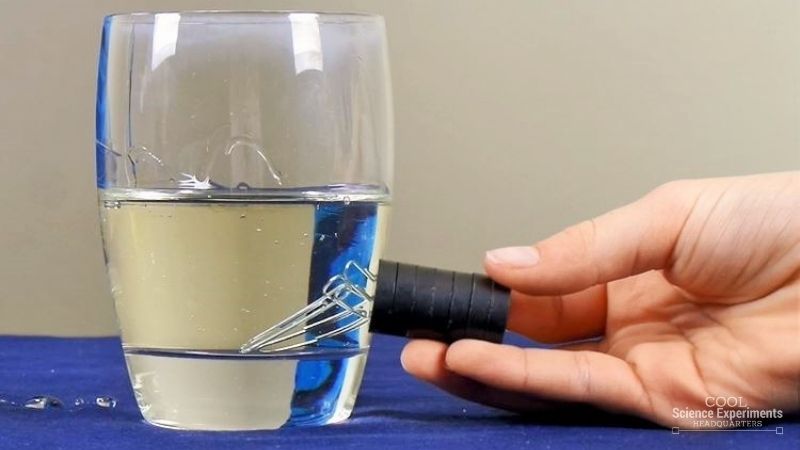
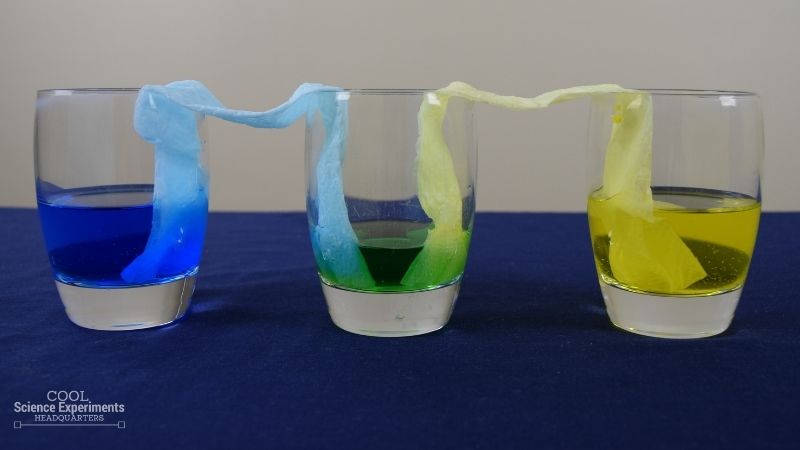
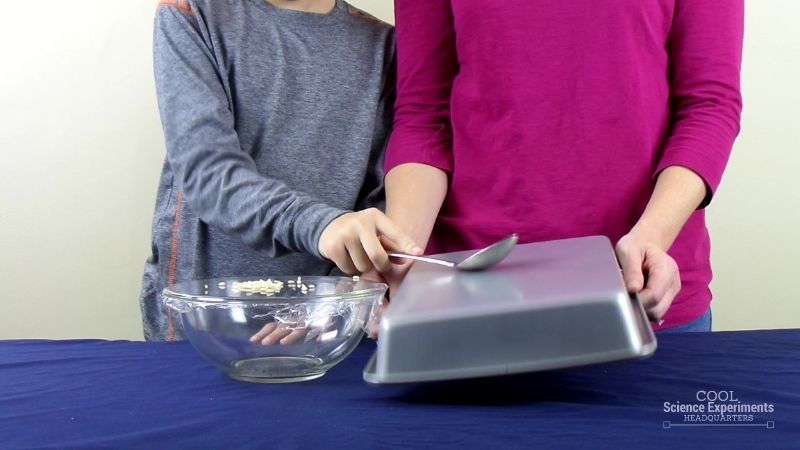

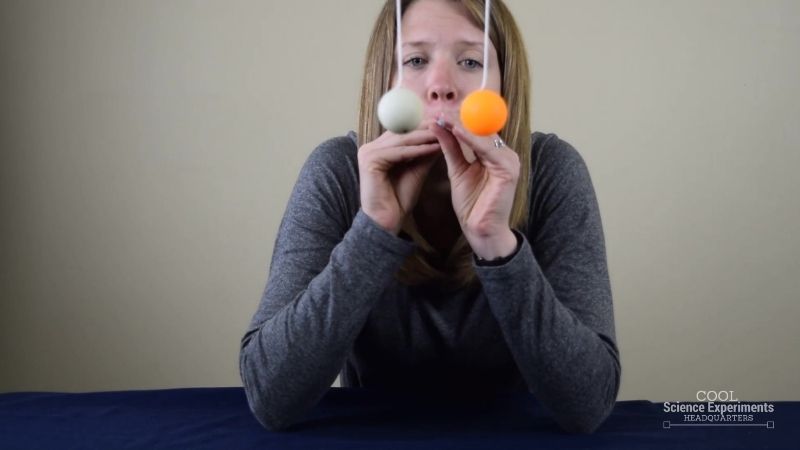
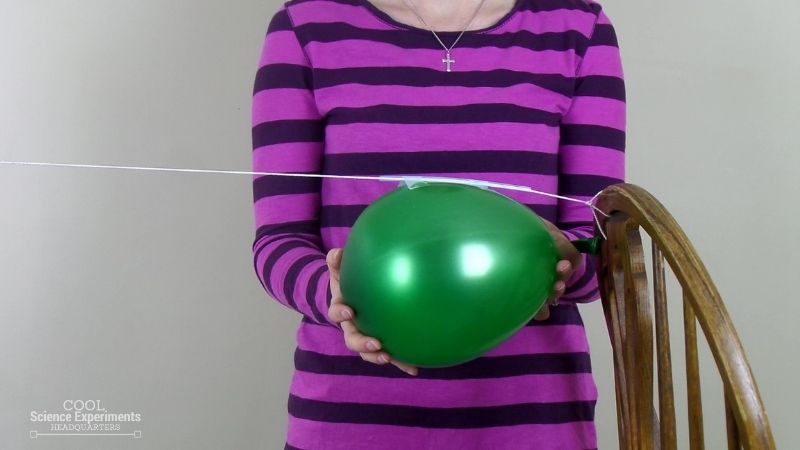
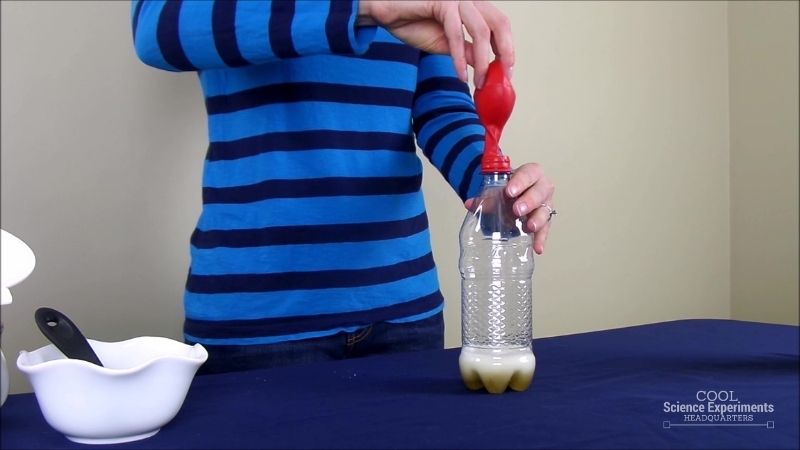
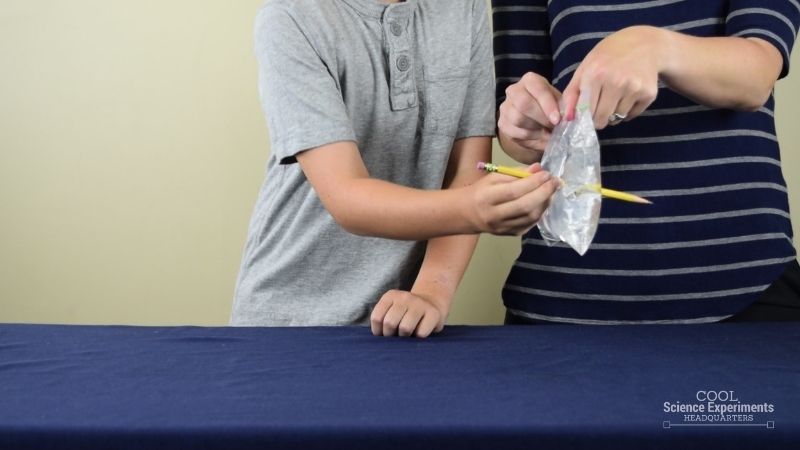
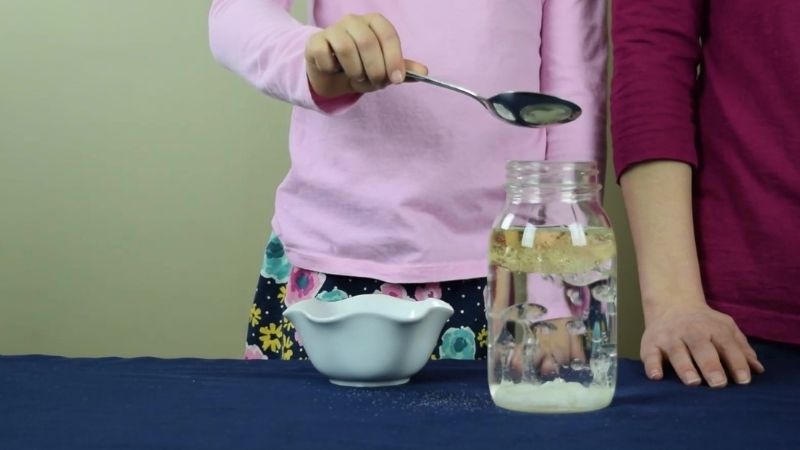
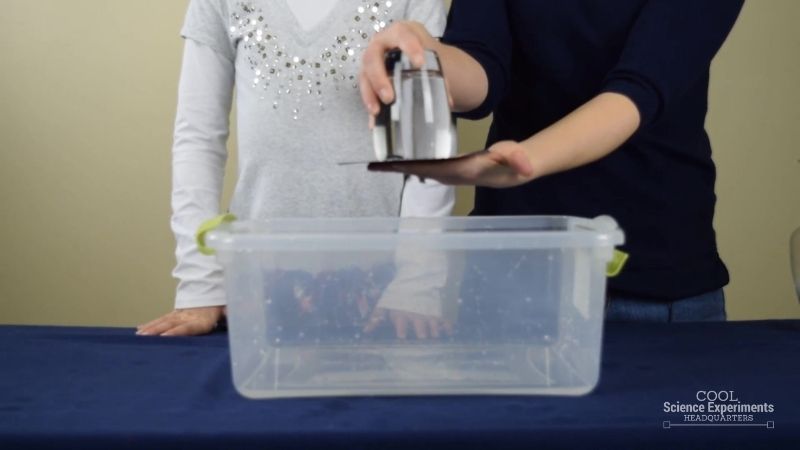
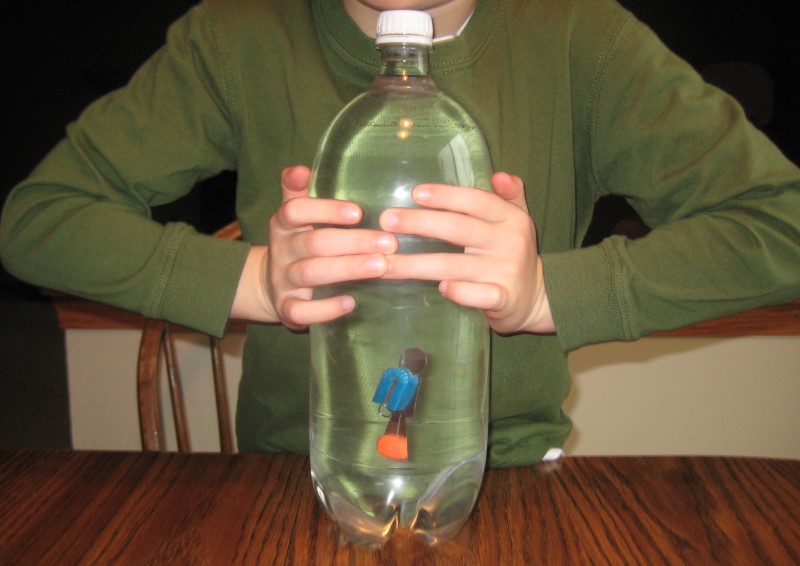
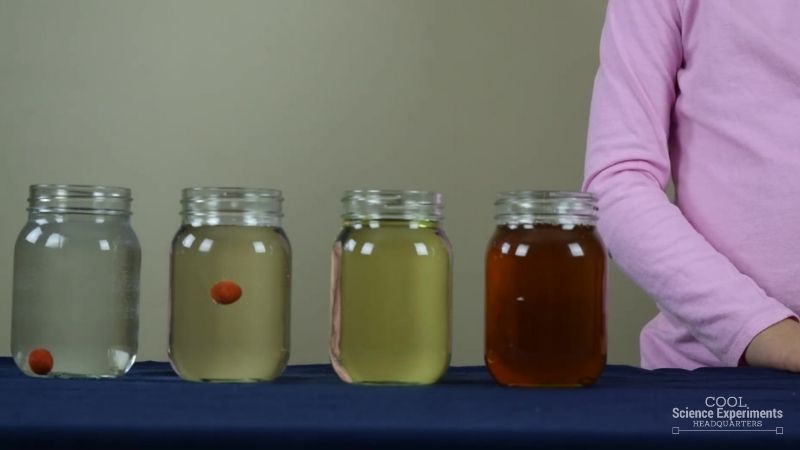
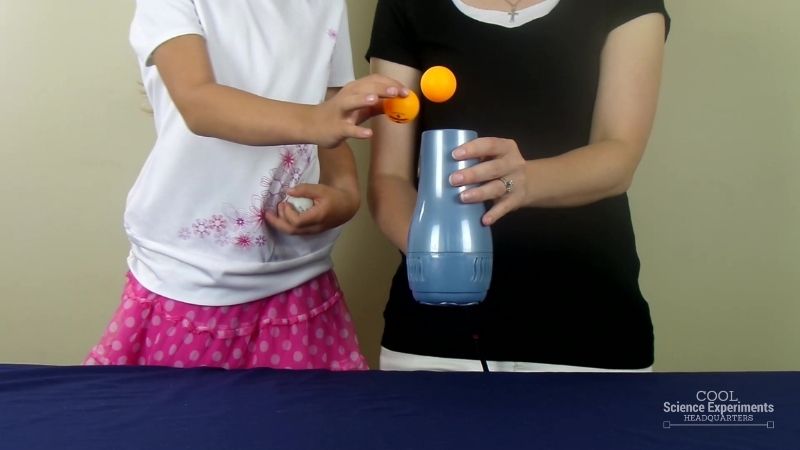
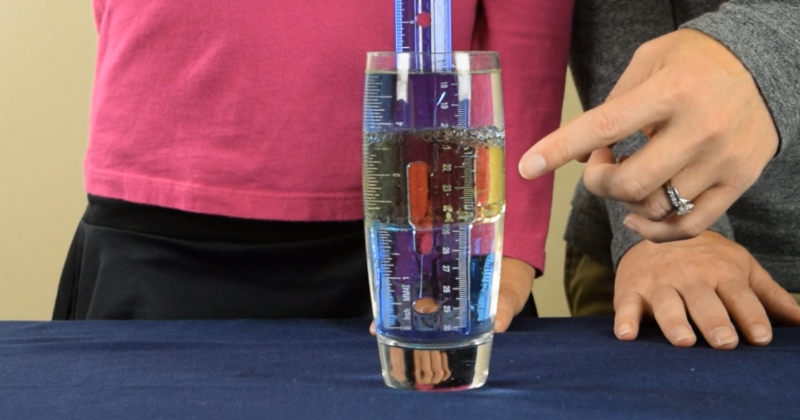

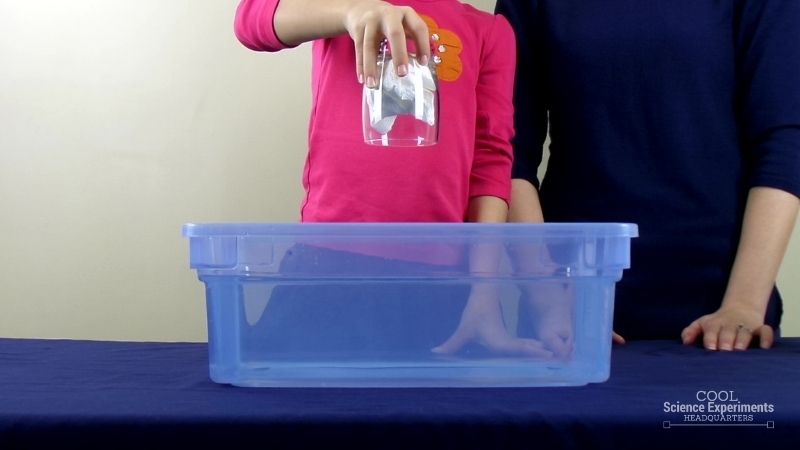
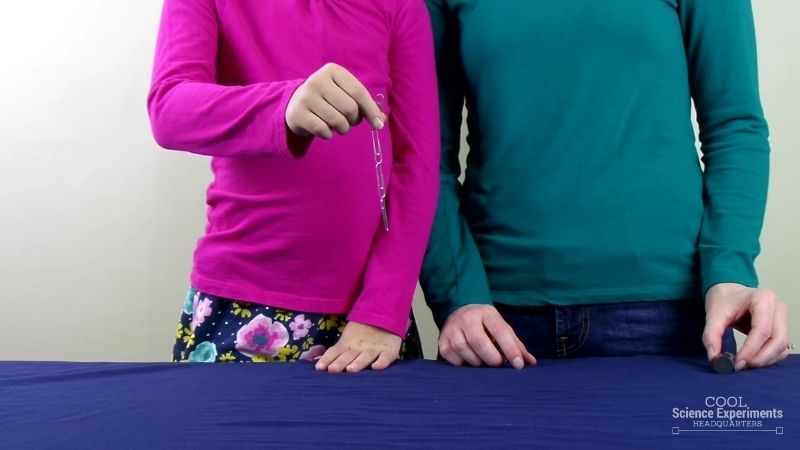
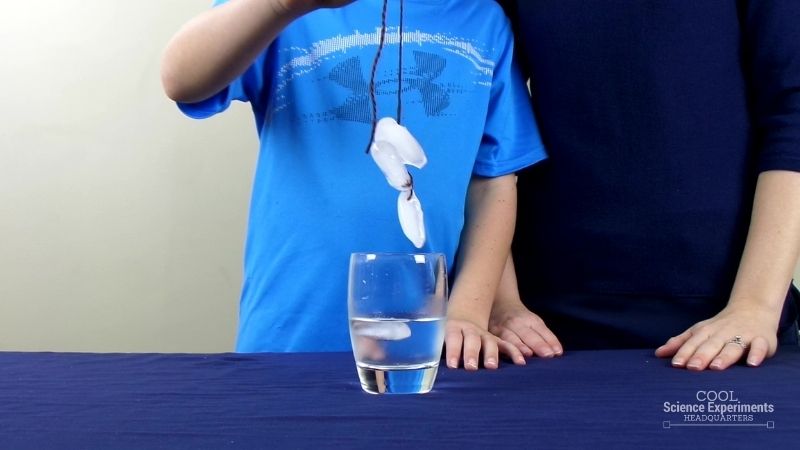
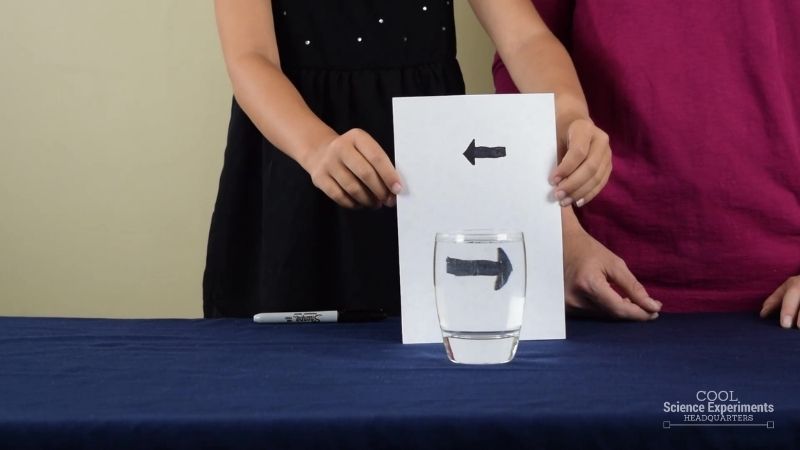

Leave a Reply